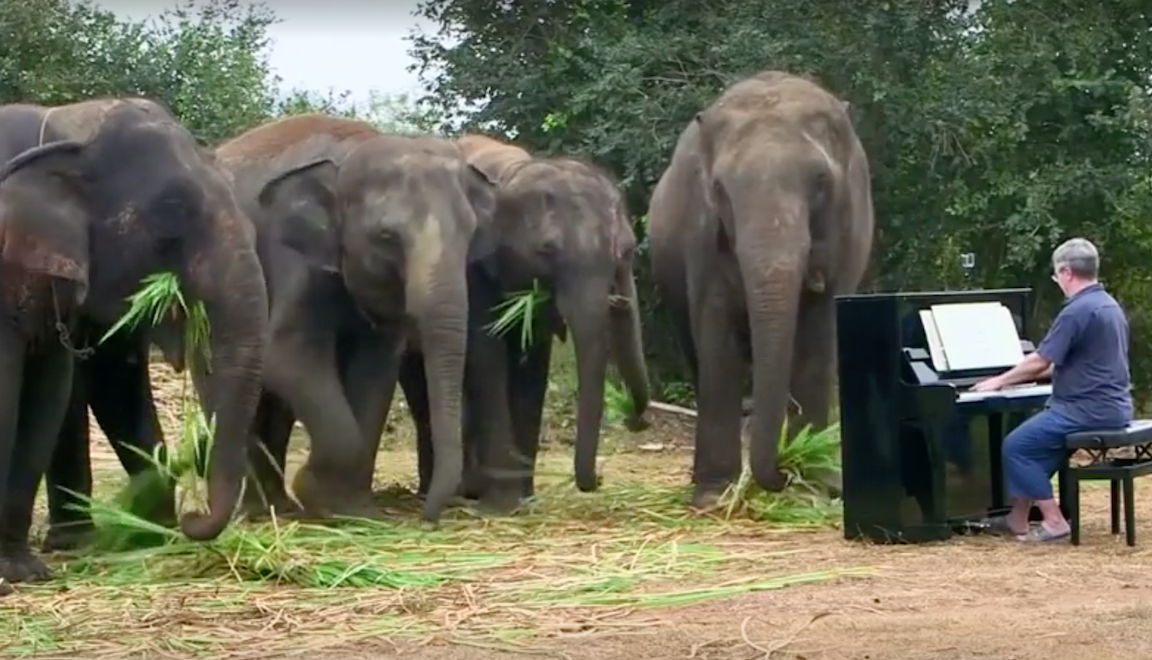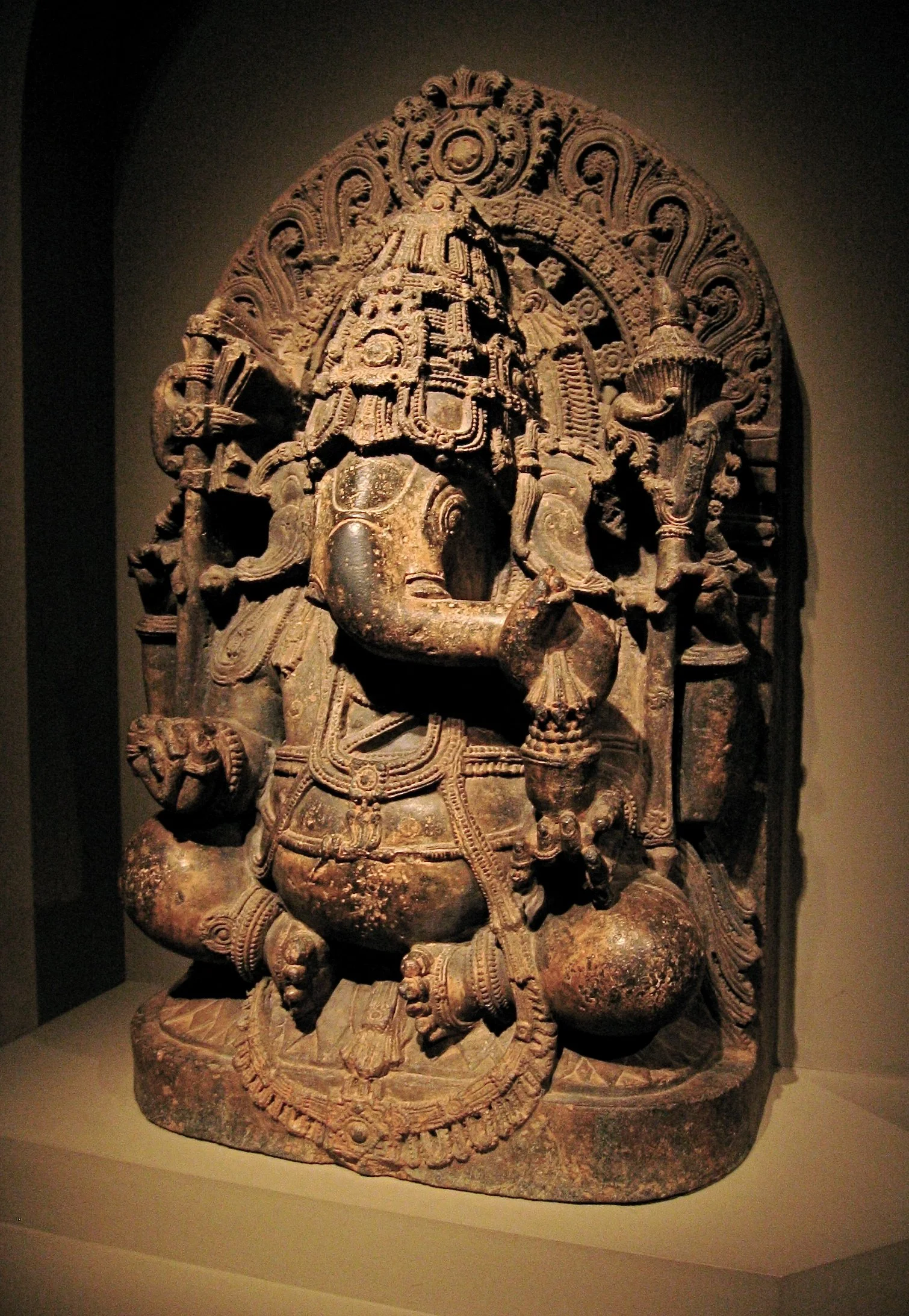… and a gathering audience
By The Landlord
“If elephants didn’t exist, you couldn’t invent one. They belong to a small group of living things so unlikely they challenge credulity and common sense.” – Lyall Watson, zoologist
“Nature's great masterpiece, an elephant;
the only harmless great thing.” – John Donne
“And the elephant sings deep in the forest-maze;
About a star of deathless and painless peace;
But no astronomer can find where it is.” – Ted Hughes
“I meant what I said and I said what I meant. An elephant’s faithful one-hundred percent!” – Dr Seuss
“The question is, are we happy to suppose that our grandchildren may never be able to see an elephant except in a picture book?” – David Attenborough
“Elephants love reunions. They recognise one another after years and years of separation and greet each other with wild, boisterous joy. There's bellowing and trumpeting, ear flapping and rubbing. Trunks entwine.” – Jennifer Richard Jacobson, Small as an Elephant
My first encounter was at age six. I had been given some peanuts as feed, held my hand out flat, and the end of that huge, grey rough, muscular proboscis gently rippled across my palm, hot air exuding, snappily vacuuming up my tiny offering before placing them in its giant, pink mouth.
But while this was exciting in itself, meeting 'Mary', towering over me just the other side of a wooden fence, my abiding memory of that first visit to Chester Zoo, in which the animals were at least given comparatively more space than many such establishments, was even more vivid, seeing from only around 10 feet away, 'Big Ronnie' the largest of this particular Elephantidae family. Ronnie was taking an absolutely huge toilet trip in his backyard, the piss coming out in torrents from his massive swinging hosepipe, the turds, each the size of footballs, dropping down with a wonderful mountainous, explosive plop. For a small kid, now that was truly astonishing. They say an elephant never forgets, but that sight, neither will I.
The attraction of elephants, whether you're a child or an adult, is of course their size, the biggest of all land animals, but also their lolloping oddness, walking grandly, but also as if slightly drunk in oversized, crinkly dark grey trousers, with their bizarre body parts - the huge head, humongous flapping ears, the tusks, and of course the trunk, that unique instrument of earthly biology, a nose that acts as a superior fifth limb, so extraordinarily dextrous and versatile, freakishly flexible, an appendage that contains up to 150,000 separate muscle fascicles, enormously strong, skilful, playful, curious and gentle. These dynamic attributes also match the complexity of their brains – of high intelligence, huge emotional breadth, intensity and expressiveness from the trumpeting high and loud, to rumble with a soft, gurgling sub bass.
Handel’s Water Music?
Elephants can live as long as humans, perhaps 70 years in the wild. They have a strong matriarchy, and live in family groups, and have what’s known as a fission–fusion society, in which multiple family groups come together to socialise. They communicate by touch, sight, smell, and sound; elephants use infrasound, and seismic communication over long distances. They eat only vegetation, are highly self-aware, and exhibit empathy for dying and dead family members. What's not to love about elephants?
So then, it is time to blow a big trumpet for these magnificent creatures, actual or metaphorical, as well as their forebears of yore, even bigger, tuskier, mammuthus and mastodons, of which there were several now extinct species, commonly equipped with long, curved tusks and, in northern species, a covering of long hair, and living rom the Pliocene epoch (around 5 million years ago) into the Holocene at about 4,000 years ago, and various species existed in Africa, Europe, Asia, and North America. Their extinction had a lot to do with us. Will DNA splicing ever resurrect them? Sounds like a dubious tusk to undertake ...
Hair yesterday. Back tomorrow?
But back to more recent history. My other great early elephant memory was of Lulu the baby elephant, that cute agent of chaos. It happened on live British television one afternoon on BBC1’s Blue Peter studio in July 1969. I didn’t see it at the time, but must have seen replays, but it included another childhood hero, presenter John Noakes, who couldn’t help but laugh about it when he slipped in Lulu’s doings. One of the strange things is that the hapless keeper keeps shouting ‘Archie’ at the end. Is that Lulu’s other name?
Inhabiting sub-Saharan Africa, South Asia and Southeast Asia when not kept in zoos and circuses, there are many fascinating facts about the elephant, whether that’s the smaller Asian or larger African varieties, spending 22 months pregnant with a calf, the longest of any mammal. Their ivory tusks help with digging, stripping bark from trees and fighting. Which brings us to the elephant in the room, of course, the brutal history of hunting and poaching. This is something that may well also come up in song suggestions. As the Canadian journalist Graydon Carter puts it: “We admire elephants in part because they demonstrate what we consider the finest human traits: empathy, self-awareness, and social intelligence. But the way we treat them puts on display the very worst of human behaviour.”
And novelist and naturalist Peter Matthiessen puts it, in The Tree Where Man Was Born: “Of all African animals, the elephant is the most difficult for man to live with, yet its passing – if this must come – seems the most tragic of all. I can watch elephants (and elephants alone) for hours at a time, for sooner or later the elephant will do something very strange such as mow grass with its toenails or draw the tusks from the rotted carcass of another elephant and carry them off into the bush. There is mystery behind that masked grey visage, and ancient life force, delicate and mighty, awesome and enchanted, commanding the silence ordinarily reserved for mountain peaks, great fires, and the sea.”
Due to the longevity and persistence of poaching, there has even been evidence that elephants are beginning to evolve without tusks, as shown in a report in National Geographic in 2019.
The South African botanist, zoologist and biologist Lyall Watson has also said: “A smaller, leaner, cleaner, tuskless and more secretive elephant is exactly what is needed. It definitely would live longer.” How about pocket sized ones, or ones the size of a cat or dog?”
The idiom, elephant in the room, only derives indirectly from the idea of human exploitation and cruelty to these creatures or others. It metaphorically means and important or enormous topic, question, or controversial issue of which everyone is aware, but no one mentions or wants to discuss because it is socially, or politically embarrassing, controversial, inflammatory, or dangerous. It could pertain to to individuals or society as a whole. You could identify that about many things from climate change to racism, poverty and other forms of injustice.
It might stem originally from Ivan Krylov (1769–1844), poet and fabulist, and his 1814 fable The Inquisitive Man, which describes who goes to a museum and notices all sorts of tiny things, but fails to notice an elephant. Fyodor Dostoevsky's novel later says "Belinsky was just like Krylov's Inquisitive Man, who didn't notice the elephant in the museum…." . Mark Twain's 1882 story The Stolen White Elephant which recounts the inept, far-ranging activities of detectives trying to find an elephant that was right on the spot after all. It gradually became a regular idiom in the 20th century, alongside metaphors for other large or unusual animals, such as the gorilla or bear.
Behind you. Jimmy Durante in the film Jumbo.
In 1935, comedian Jimmy Durante starred on Broadway in the Billy Rose Broadway musical Jumbo, in which a police officer stops him as he leads a live elephant and asks, "What are you doing with that elephant?" Durante's reply, "What elephant?" was a regular laugh-out-loud show-stopper joke.
But less jokingly, it was also used as the title of Gus Van Zant’s powerful 2003 film about high-school kids who plot and carry out a shooting, pertaining to the gun culture and the social problems with which its associated, as well as being a fictional response to the Columbine High School Massacre of 1999. It’s heavily ironic that the shooting of elephants and people become one huge metaphor in this film.
Another more fantastical idiom that may well come into lyrical play is pink elephant, something that also gets mixed up with the room metaphor, pertaining the effects of drinking alcohol. One early example is an alcoholic character in Jack London's 1913 novel John Barleycorn is said to hallucinate "blue mice and pink elephants”, An alcoholic character in Jack London's 1913 novel John Barleycorn is said to hallucinate "blue mice and pink elephants”, but was likely to be in common use long before this, as well as other sights of animals as metaphors for this human state, including “seeing snakes in boots”.
Perhaps the most vivid reference to pink elephants occurs in the incredible sequence in 1941 Disney, Dumbo, poorly remade in 2019. After taking a drink of water from a bucket spiked with champagne, Dumbo, the elephant who could fly, and his mouse friend Timothy begin to hallucinate singing and dancing elephants in a segment known as "Pink Elephants on Parade". I still find it astonishingly good, filled with great lyrics too, such as:
“I can stand the sight of worms
and look at microscopic germs.
But technicolor pachyderms
Is really too much for me”.
Elephants have not only been a source of wonder but also worship, and none more colourful than the Hindu elephant god Ganesha, also known as Ganapati and Vinayaka with shrines and images found throughout India, Nepal, Sri Lanka, Thailand, Indonesia, Singapore, Malaysia, Philippines, and Bangladesh. Devotion to Ganesha is widely diffused and extends to Jains and Buddhists, with many characteristics alongside the obvious head, but chiefly is seen as the remover of obstacles and thought to bring good luck, the patron of arts and sciences; and the deva of intellect and wisdom.
A 13th-century statue of Ganesha, Hoysala-style, Karnataka
Back in Thailand, let’s now enjoy Paul Barton reciting his short Beethoven-inspired “Piano for Elephants” improvised arrangement at a sanctuary in mountains of Kanchanaburi, Thailand, as part of the Beethoven Pastoral Project to mark the composer’s 250th anniversary in 2020.
Even more surreal is the Thai Elephant Orchestra, the ensemble of up to 14 elephants in Lampang in Northern Thailand, using specially designed heavy-duty musical instruments, and co-created by elephant conservationist Richard Lair of the National Elephant Institute and the American musical artist and neuroscientist Dave Soldier. The result isn’t exactly catchy, but you could certainly call them a big band.
Despite the orchestration of this daft gathering, elephants still do what they want when push comes to shove. In The Elephant Whisperer, author Lawrence Anthony says:
“Elephants operate on a steadfast principle that all other lifeforms must give way to them, and as far as they were concerned, foreign tourists at a sit down dinner around a swimming pool were no different than a troop of baboons at a swimming hole.”
With that in mind, let’s enjoy some footage of the elephants of Mfuwe Lodge, Zambia, who, every spring, when the mangoes are ripe, and led by their matriarch ‘Wonky Tusk' they make their way through the hotel’s reception area and onto the the grounds where the mango tree stands.
Let’s now hear from more elephant admirers eager to say more about their favourite animal. Children’s author Jennifer Richard Jacobson adds: “Elephants can sense danger. They're able to detect an approaching tsunami or earthquake before it hits. Unfortunately, Jack did not have this talent. The day his life was turned completely upside down, he was caught unaware.”
And here’s author Kira Jane Buxton, from Hollow Kingdom, on their memory and its link to time, trees and storytelling:
“An elephant's memories don't reside in organ or skin or bone. They live closer to tree time than we do, and their memories reside in the soul of their species, which dwarfs them in size, is untouchable, and lives on forever to honour every story. They carry stories from generations back, as far as when their ancestors wore fur coats, That is why, when you are close to an elephant, you feel so deeply. If they so choose, they have the ability to hold your sadness so you may safely sit in the lonely seat of loss, still hopeful and full of love. Their great secret is that they know everything is a tide – not a black tide, but the natural breath of life – in and out, in and out, and to be with them is to know this too, And here they were, suddenly lifting the weight of our sadness for us, carrying it in the curl of their trunks. We all sat together in our loss, not dwelling, but remembering. For an elephant never forgets.”
So then, it’s time for gather the herd and see what comes up in the world of song. I’m delighted to welcome back to the bar, this week’s big animal handler, and who else, but the stupendous Severin?! Place your elephant-related songs in comments below for deadline on Monday 11pm GMT, for playlists published next week. A stroll in the forest or a mammoth task?
New to comment? It is quick and easy. You just need to login to Disqus once. All is explained in About/FAQs ...
Fancy a turn behind the pumps at The Song Bar? Care to choose a playlist from songs nominated and write something about it? Then feel free to contact The Song Bar here, or try the usual email address. Also please follow us social media: Song Bar Twitter, Song Bar Facebook. Song Bar YouTube, and Song Bar Instagram. Please subscribe, follow and share.
Song Bar is non-profit and is simply about sharing great music. We don’t do clickbait or advertisements. Please make any donation to help keep the Bar running:







